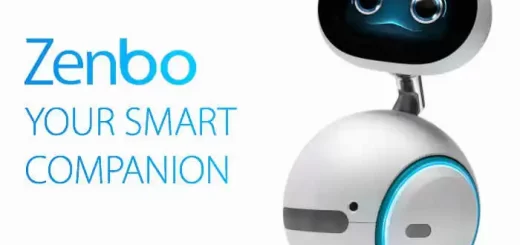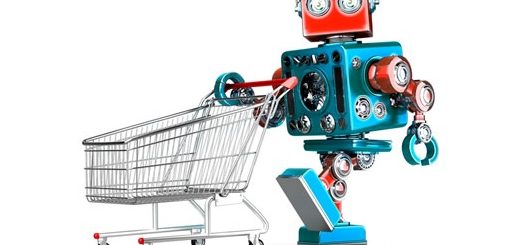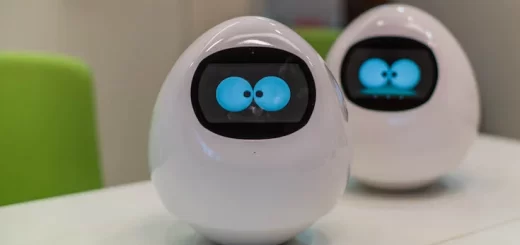Robot teachers use, types, advantages and disadvantages
Robot teachers are programmed for their jobs, They will always obey, They are the solution to education, They can teach you technological skills, They can teach poor kids that have no chance to come in contact with technology and they do not have to get paid.
Robot teachers
Robot teachers can be used in the development of the design and structure of learning programs, It may be challenging to use such technologies as a substitute for human education all throughout the world, if the entire teaching curriculum is based on computer programs, human teaching may appear to be redundant, This is due to the associated technology limitations, such as inaccuracy in voice or emotion recognition.
The first robot teacher was invented in Japan in 1973. It was called WABOT-1 and was a humanoid robot that could teach English to children. It was a simple robot that could teach children basic math and language skills. Robot teachers can be programmed to adapt their teaching style to each student.
Robot teachers advantages
Robot teachers are better than humans, They are new and they will have new methods, The teachers have the old methods while the robot teachers have up-to-date methods, If the robots become teachers, They will only be in elementary schools and pre-schools.
Robot teachers can be used to teach students in remote locations. This is beneficial for students in developing countries or who live in rural areas. Robot teachers can be used to teach students with disabilities, Robot teachers can be used to teach students with autism spectrum disorder or other communication disorders.
Robot teachers are mainly used as classroom assistants in elementary schools, Some robots can transmit video from far away places, so, the teacher does not have to be in the classroom if they do not live in the country, The kids not only love the robots but also the robots benefit the kids in the classroom.
Scientists think that social interaction with the live human being is crucial for learning to take place in children under 1 year, In the future, more and more of us will learn from social robots, especially the kids learning preschool skills and students of all ages studying a new language.
Social robots are being used on an experimental basis to teach various skills to preschool children, including color names, new vocabulary words, and songs and they can save money for the schools by not having to pay the teachers. Some robot teachers can tell jokes and sing songs. Some robot teachers can play games with students. Some robot teachers can give students hugs.
In the future, robots will only be used to teach certain skills such as acquiring a foreign or new language, possibly in playgroups with children or to individual adults, But robot teachers can be cost-effective compared to the expense of paying the human teacher.
Relying on technology for classroom instruction creates an even playing field where all the students are learning everything that needs to be covered according to the curriculum standards and they should have a well-educated, high-quality teacher in the classroom.
The students are all also receiving the same high-quality information, using the robot teacher for student instruction can greatly cut down on the teacher’s salary costs, By placing the burden of teaching the lessons on programmed instruction.
SMART Boards are interactive whiteboards that can project computer displays and allow the students to interact with them through touch, SMART pens help the students to write on the screen and the board can translate the student’s handwriting into the computer text and then save it as a document file on the connected computer.
While technology can be a great tool for promoting interactive learning and providing information beyond the scope of the teacher’s knowledge base, It can not replace the intrinsic value of having the human devoted to the child’s educational development present in the classroom.
Today, robot teachers are much more sophisticated. They can teach a wide range of subjects, including science, history, and social studies. Robot teachers can also be used to provide individualized instruction to students. They can assess each student’s progress and tailor the lessons accordingly.
Robot teachers are used as teaching assistants, rather than as full-fledged teachers. They can help human teachers with tasks such as grading homework, leading small groups, and providing extra help to struggling students. Robot teachers can be used to provide students with personalized feedback and extra help when needed.
Robot teachers can be used to create immersive learning experiences for students. a robot teacher could be used to create a simulated historical event or a virtual field trip to a foreign country. Robot teachers can be used to teach students about robotics and artificial intelligence. This can help students develop important skills for the future workforce.
Robot teachers have the potential to revolutionize education. They can help to provide students with more personalized and engaging instruction, and they can make education more accessible to students all over the world.
Some robot teachers can be programmed to speak multiple languages, making them whizz at teaching foreign languages or helping students from different backgrounds. Robot teachers could be used to provide education in remote locations where there might not be enough human teachers. This can make learning more engaging and fun for students.
Unlike traditional teachers, robot teachers can be programmed to adjust their teaching style to fit each student’s needs, giving everyone a more personalized learning experience. This means they can give extra help to those who struggle and keep things moving for those who grasp concepts quickly.
Robot teachers can zip through grading multiple-choice tests and other assessments, freeing up human teachers for more interactive tasks. While emotions might not be their strong suit yet, some robot teachers can be programmed to tell jokes, sing songs, or dance to keep students engaged and having fun while they learn in the classroom.
Robot teachers can be tireless assistants in the classroom, helping with tasks like grading assignments and taking attendance, freeing up human teachers for more one-on-one interaction. They don’t get tired! Robot teachers can tirelessly explain concepts, answer questions, and practice with students all day long.
Disadvantages of robot teachers
Many schools don’t have a lot of money, They don’t pay their teachers, So, they cannot afford the robot teacher even at the cheapest price, The robots need electricity, and electricity costs a lot.
Robot teachers do not have feelings, They are not able to help you to get over things and help you feel better but the human teachers can and the robot wouldn’t know what to do. If we converted to robots, teachers and staff worldwide would lose their jobs, The robots are not able to develop personal distinctions between the students.
Implementing this technology in the classroom requires the existing infrastructure for electricity and Internet, an instructor device (desktop/laptop/iPad) is needed to connect to and the software to enable the use of all aspects of the hardware.
Robot teachers are higher-cost technologies in the developing world, The software is employed on low-cost laptops, desktops, or tablets to simulate teacher instruction. In these classrooms, The entire curriculum can be imparted to the students through the computer program, making a quality human teacher unnecessary.
There are no inspiring robot teachers, They are all programmed to spit the knowledge out at the students and expect the students to spit it back at them. Robot teachers can not develop creative or innovative ideas for teaching the material in a new way, It can not comment on the papers to provide the students with valuable positive feedback or critiques.
Robot teachers can not pull the struggling student aside and determine if there are personal issues related to his/her performance, It can not encourage students with particular strengths and interests in the subject to consider certain career paths. In developing regions, Employing technology as an alternative to human instruction makes it difficult to gauge the design specifications for effective instructional software.
Types of Robots in the Classroom
A small robot named KeeKo is being used to help kindergarten teachers when needed In China, the KeeKo robot tells stories to the children, KeeKo robot gives the students logic problems to answer, and shows certain facial expressions when the student gets the problem correct or wrong, KeeKo offers the human teacher a break for a few minutes to take a breather. KeeKo can assist the teacher in the classroom, and the students can participate and enjoy the activity.
Tega is an AI-powered, teddy bear-sized and -looking robot, that was tested in Boston-area schools with substantial English-language learner populations in randomized control trials, The robots‘ can help 5- and 6-year-olds develop their language and literacy skills, the usage of human teachers and artificially intelligent robots in schools develop education in terms of vocabulary and oral language development in children.
Boe-bot robots are simple robots with a microprocessor mounted on wheels as their main component, they can identify the distance from an item, maneuver, and steer by sensing light, thanks to the program built into their system, they come with light and sound mechanisms to indicate the status of contact sensors and the room’s escape edges.
Humanoid robots are used in the classroom, they are a step up from telepresence, so, teachers can use the robot to stay linked to students remotely, The instructor can virtually engage in a learning session through a display device, The robots type that can be employed in a classroom is determined by the students’ age, group and the course of study. In the classroom, many kinds of robots can be deployed as teachers.
In China, a robot teacher named Xiao Hui is being used to teach English to elementary school students. In Japan, a robot teacher named Robovie is being used to teach social studies to middle school students. a robot teacher named Elias is being used to teach math to kindergarten students.
In Japan, there is a robot teacher named Pepper who is used to teach English to elementary school students. Pepper can interact with students in a variety of ways, including through conversation, gestures, and facial expressions. Another robot teacher, named Elias, is being used in elementary schools to help students with their speaking and listening skills.
Benefits of a human teacher
Human teachers can read social cues, they can inspire children, they have strong sensory feelings and emotions, they can be creative, they are social, and they do not have technical disruptions, Young people still need human teachers to help them remain in the reality in front of them.
Educational robotics, Robot teachers, Social robots review, features advantages and drawbacks
Artificial intelligence in education, AI tutors features, advantages and disadvantages
Pros and cons of technology in education and Can technology replace teachers?
The importance and uses of educational robotics for the students




its well
Thank you
Well
Thank you
very well said
Thank you very much
What are the advantage of human teachers
teachers explain more and if you have questions, they can understand the questions , They can answer them and show them to you step by step , then again
teachers love the students , They help them , The teacher is the best friend to the student .
Heba Soffar you explain very well about important key words and there is no sentences that are not important
Thank you very much for your comment
You’ve clearly thought about this in a lot of detail. This is a great piece of writing.
Thank you very much for your comment
GOOD
please write about the future robtic teachers
Thank you very much for your comment
You can read these articles
Pros and cons of technology in education & Can technology replace teachers?
Telepresence robots uses, advantages & disadvantages
The importance and uses of the educational robotics for the students
thank you for the information it is very informative and it has helped a lot with my research.
You are welcome
the girl next to me is very annoying and robots could take care of that
hola de
THIS IS ONLY FOR PEOPLE WHO BETRAYED US HIGHSCHOOLERS
very cool and well said
Thank you very much
good morning 😃
what points can u state about robots knowing more languages than humans
You can read this article about Robots for Learning Language, Children can learn English or any language from a humanoid robot
Educational robotics, Robot teachers, Social robots review, features advantages & drawbacks
Very well written
Thank you for your comment
superb writing
Thank you very much for your comment